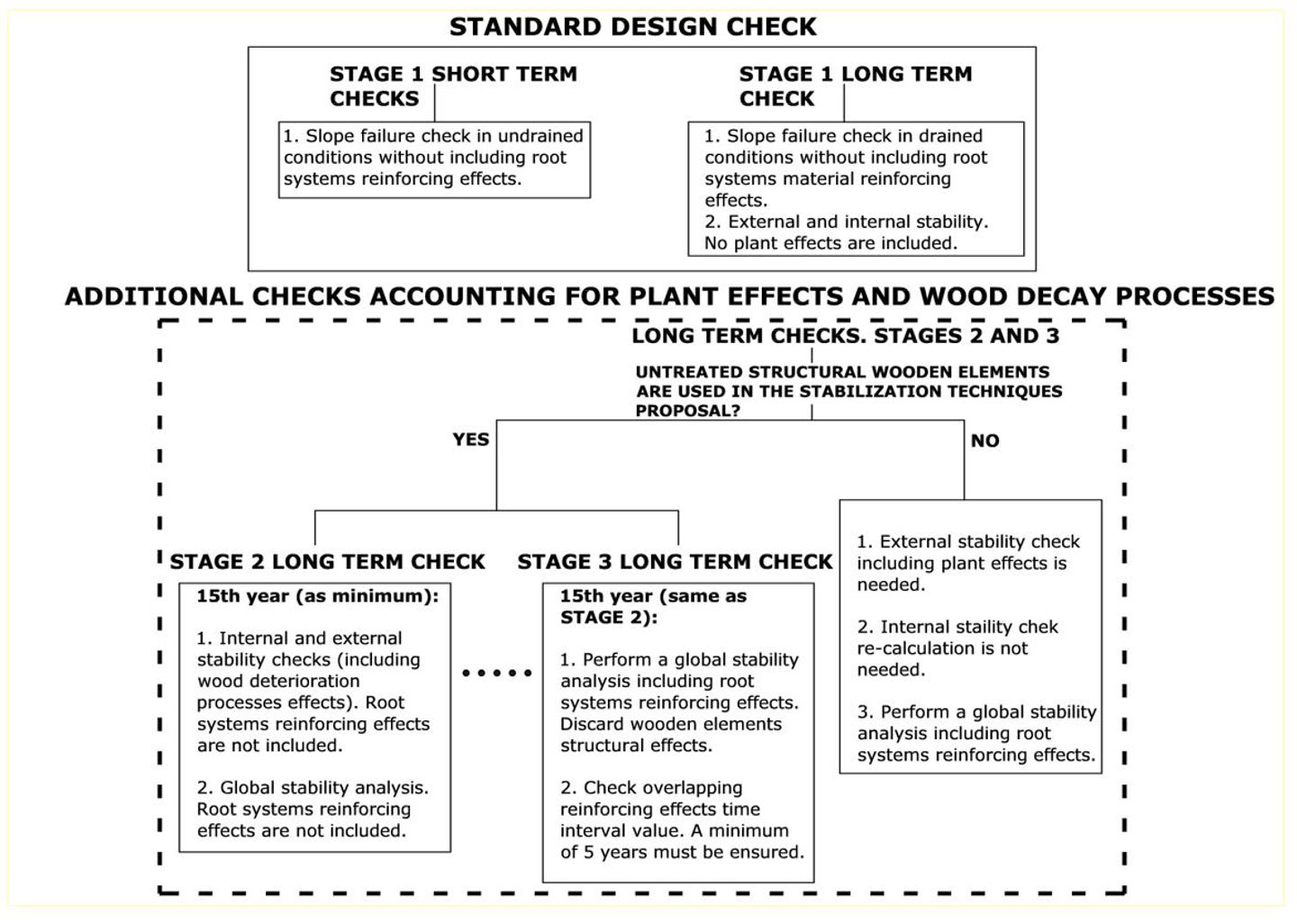A novel integrated design methodology for nature based solutions and soil and water bioengineering interventions: the Tardio&Mickovski methodology
A methodology for designing Nature Based Solutions (NBS) and Soil and Water Bioengineering (SWB) works is proposed which includes the main particularities of this type of interventions. The dynamic nature of NBS/SWB works, their most important changes and possible critical scenarios are reflected in the proposed methodology.The methodology defines a time staged scheme for a safe long term soil bioengineering work design and covers an existing gap in the SWB works design.
This research paper has been published on the journal Sustainability.
Materials and methods
The proposed methodology includes the main elements characteristic of the dynamic nature of soil bioengineering interventions: the wood deterioration processes and the vegetation reinforcing and stabilizing effects.
With a stress transfer approach between the utilized inert element and the evolving vegetation, a set of design time milestones are integrated throughout the soil bioengineering service life stability checks.
The main objective of this methodology is to ensure that the bioengineering work design provides a stable scenario where the vegetation can adequately develop and fulfill its reinforcing and stabilizing functions in the short, mid, and long term.

Methodology proposed by Tardio&Mickovski.
Discussion and conclusions
Different critical scenarios from the structural stability point of view were detected throughout different case studies analysis. These outcomes prove the potential of the proposed methodology for both ensuring an effective design decision making process and providing a long term soil bioengineering living structure stability while making allowance for a safe stress transfer of the stabilizing functions between the inert materials and the vegetation. It also ensures stability over the structure’s service life and the possibility for ecological dynamics development and succession.
The application of this methodology is justified with a critical review of existing soil and water bioengineering monitoring works data and research papers outcomes. Comparisons regarding wood deterioration processes and vegetation reinforcing effects were carried out showing a very good accordance between the accumulated information from monitoring and the methodology outcomes and performance.
The proposed methodology, which covers an existing design gap in this type of interventions, enables the generation of continuous improvement processes (adaptive management of information), the calibration of the method, and the use of the information generated during the monitoring stage of SWB works.
The paper can be downloaded from the following link: https://www.mdpi.com/2071-1050/15/4/3044